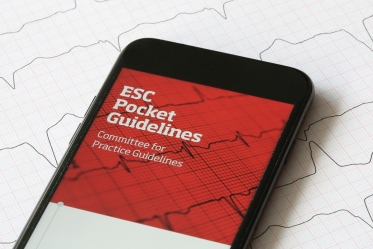Endorsed by cardiac societies
Association of Cardiologists of Kazakhstan
,
Austrian Society of Cardiology
,
Azerbaijan Society of Cardiology
,
Belgian Society of Cardiology
,
Association of Cardiologists of Bosnia & Herzegovina
,
British Cardiovascular Society
,
Bulgarian Society of Cardiology
,
Croatian Cardiac Society
,
Czech Society of Cardiology
,
Danish Society of Cardiology
,
Egyptian Society of Cardiology
,
Estonian Society of Cardiology
,
Finnish Cardiac Society
,
French Society of Cardiology
,
Hungarian Society of Cardiology
,
Hellenic Society of Cardiology
,
Italian Federation of Cardiology
,
Kosovo Society of Cardiology
,
Kyrgyz Society of Cardiology
,
Latvian Society of Cardiology
,
Lebanese Society of Cardiology
,
Lithuanian Society of Cardiology
,
Luxembourg Society of Cardiology
,
Maltese Cardiac Society
,
National Society of Cardiology of North Macedonia
,
Norwegian Society of Cardiology
,
Polish Cardiac Society
,
Portuguese Society of Cardiology
,
Romanian Society of Cardiology
,
Russian Society of Cardiology*
,
San Marino Society of Cardiology
,
Cardiology Society of Serbia
,
Slovak Society of Cardiology
,
Slovenian Society of Cardiology
,
Spanish Society of Cardiology
,
Swiss Society of Cardiology
,
Turkish Society of Cardiology
,
Ukrainian Association of Cardiology






 Our mission: To reduce the burden of cardiovascular disease.
Our mission: To reduce the burden of cardiovascular disease.